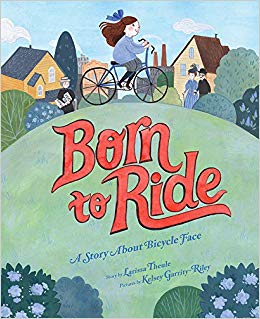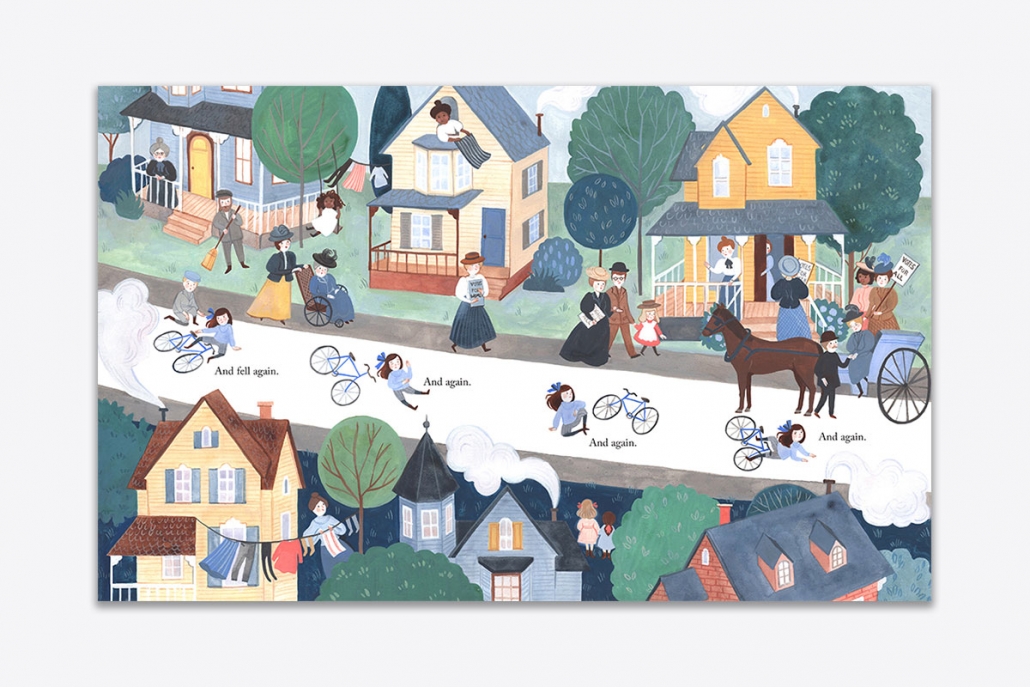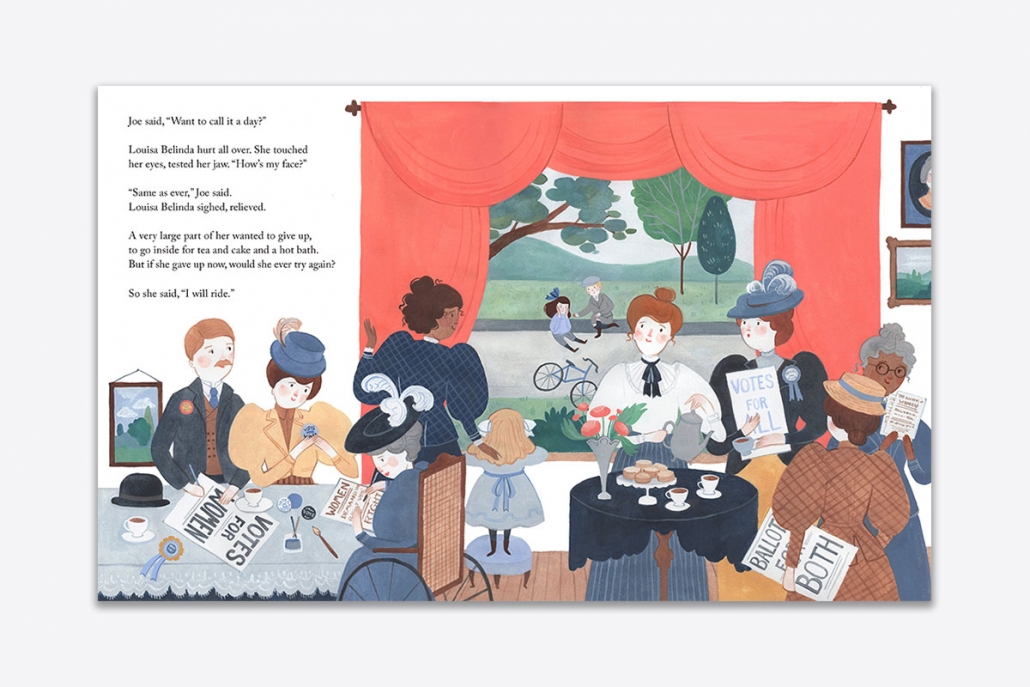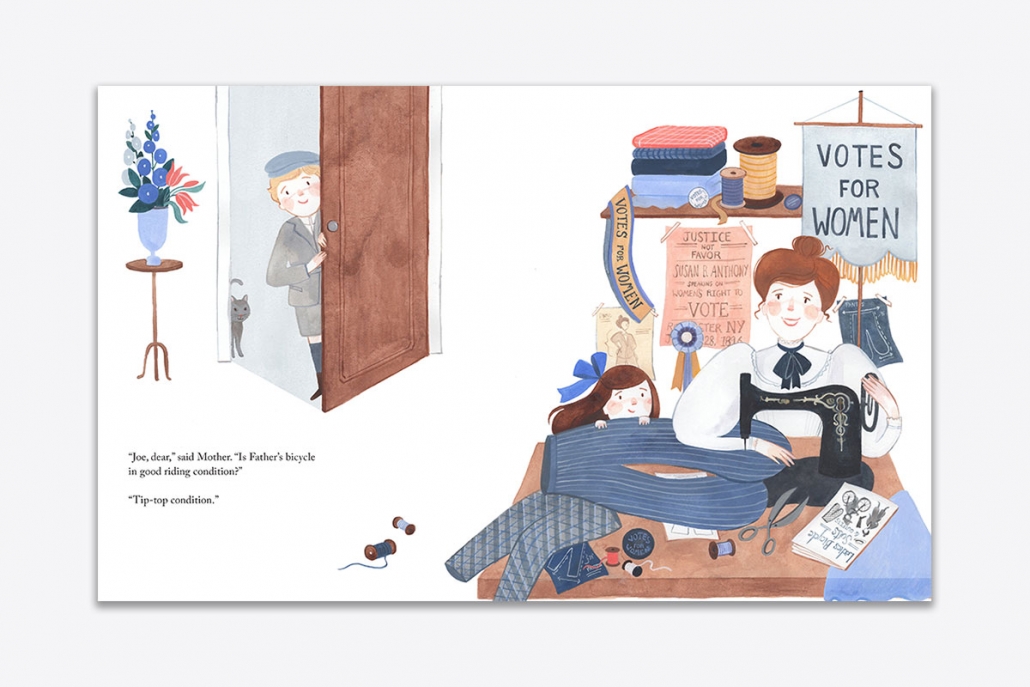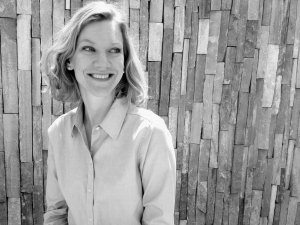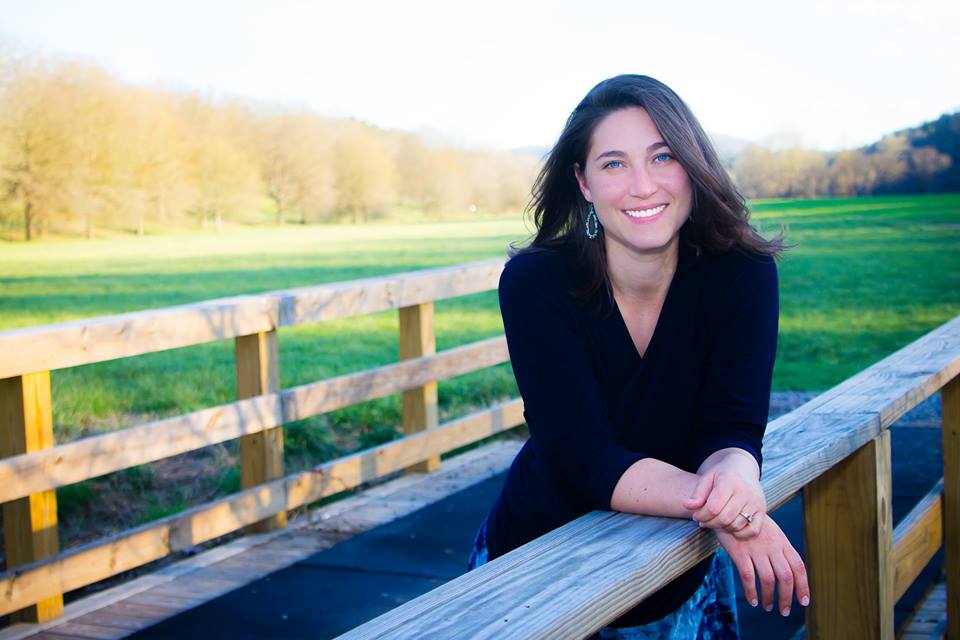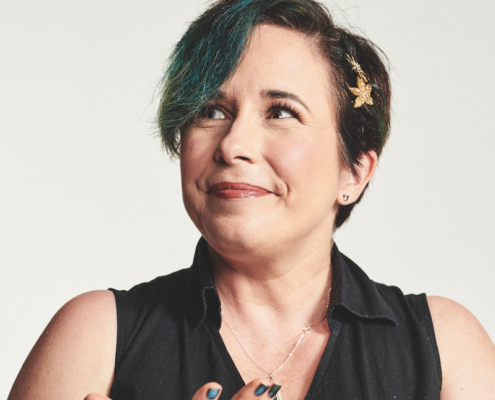New Release: Born to Ride – Larissa Theule ’09
I had the pleasure of speaking to 2009 grad Larissa Theule about her newest publication, her picture book entitled Born to Ride: A Story About Bicycle Face.
Set against the backdrop of the women’s suffrage movement, Born to Ride is the story of one girl’s courageous quest to prove that she can do everything the boys can do, capturing the universal freedom and accomplishment that anyone can experience when riding a bike.
Nora: I love this story so much, but I confess I’d never heard about “bicycle face” before. Did you know you wanted to write about Bicycle Face as soon as you learned about it? And when did you first learn about it?
Larissa: For readers who don’t know, during the 1890s, “bicycle face” was a made-up medical affliction supposedly caused by the strain of staying balanced on a bike, affecting women more than men because of their ‘delicate nature.’ Allegedly, the strain of staying balanced would cause one’s eyes to bulge and jaw to clench, permanently. I first read about bicycle face in an article a few years back. Maybe on Vox, or the Atlantic? I had just dropped my kids off at school and was hanging out in my car, reading the news and such. When I clicked on the article, I started laughing. It seemed too preposterous to be real. So I went swimming around in newspaper archives for a bit, discovered bicycle face had been a real fake phenomenon, and then got hit with a story idea pretty hard. I knew right away I wanted to flip the term on its head and retroactively claim it as a mark of fun and courage. At this time, my daughter was learning to ride a two-wheel, and when she finally learned to balance, the freedom she felt was fully evident on her little face. I wanted to celebrate that feeling. I wrote the story in a few weeks, tested it out on my kids, and sold it to Abrams not too long after.
Nora: That’s a fast sale! Congratulations! Besides the wonderful story told by text, the illustrations offer an additional rich layer of story, depicting the women’s suffrage movement and the involvement of Louisa Belinda’s mother. Did you have any illustrator notes or collaborate with Kelsey Garrity-Riley in any way?
Larissa: Kelsey and I didn’t collaborate directly, but I did give illustration notes. I noted that I wanted the suffragist movement to be the backdrop for the story because I thought surely a little girl determined to own her freedom on a bike would be familiar with the larger struggle for women’s liberation. The notes I gave were framed as suggestions. Kelsey ran with them, fleshed out the backdrop narrative, and peppered it with loads of thoughtful detail. I love what she came up with.
Nora: It sounds like both your and Kelsey’s artistic visions really complemented one another, and I think it shows in the wonderful product.
I always love to hear about books’ evolutions from draft to draft. Did the story evolve much throughout drafting, or was the published version of Born to Ride very similar to your first version for it?
Larissa: I got lucky with this one. The story itself came together quickly and the published version is very similar to the first version.
Nora: How wonderful for you! If only that happened every time. [laughs]
Larissa: For real! It was definitely a one-off. The backmatter, however, had its own journey. I didn’t sell Born to Ride with the author’s notes. I was asked to write those later, and they kicked my butt. I had done enough research to write the story, but the author’s notes required a deep-dive into history. They took me months to write. The second note, “From Bicycles to Suffrage”, was the most difficult because I needed to do a lot of unlearning while learning. I didn’t want to perpetuate the slant version of suffragist history I’d been taught as a kid, the white-woman version.
Nora: I love that you took the time and care to address the prejudices that existed in suffrage as well. The notes are both so informative, and the second one in particular is very eye opening to those of us taught only the white-woman version.
Larissa: Yeah, we need to quit it with that false narrative and use whatever space we’re given, even a short author’s note, to tell the fuller account.
Nora: You’ve previously published a short story collection, Fat and Bones: And Other Stories (Carolrhoda Books, 2014). Would you describe it as MG or YA?
Larissa: Thanks for mentioning Fat and Bones! It was my first book, and my creative thesis. It’s pretty dark, and I’m not sure if it’s MG or YA, so I say it’s both. Publisher’s Weekly called it “Charlotte’s Web by way of Neil Gaiman”, if that’s any help.
Nora: Um, well that sounds awesome. Let me just make a little note on my TBR list… So why the switch to picture book writing? Did you study picture books writing while at VCFA or did you come to the genre later? Do you have any advice for writers who would like to switch between the two?
Larissa: Haha, I need advice on how to switch between the two. So far, Fat and Bones is the only longer work I’ve managed to write well. I did study picture book writing at VCFA, although I didn’t have a specific aspiration to become a picture book writer. But I had my first child during my last semester—
Nora: Me too! That was a wild time.
Larissa: Ah, so then you know! We should compare notes sometime. The VCFA community was incredibly supportive. For me, those early days of parenting were especially hard. I found that I could carry a full picture book text in my head and revise while nursing and changing diapers. It’s a skill that’s become a part of how I work. Now that my kids are a little older, I revise in my head while watching soccer games and choir practices. I know I’m not alone in this, and many parent-writers keep longer works in their heads. I aspire to that. Longer works are a struggle for me, so if you have any advice, I’m all ears!
Nora: I wish I did! I use genre switching as a way to free up my brain when I’m stuck on a project, but I find picture books so challenging! Speaking of, you have several more picture books coming out next year. Can you give us a quick pitch of each?
Larissa: I’d love to. A Way With Wild Things, illustrated by Pura Belpré Honor winner Sara Palacios, comes out April 7, 2020 (Bloomsbury). Sara’s collage art is so full of texture, patterns, and color, the book bursts with life. The story’s about a shy girl named Poppy who loves bugs and nature. When people are around, she hides in the background. Her uncle calls her a wallflower, but she knows she’s a wildflower.
Nora: I LOVE that premise! You’re definitely a fan of turning terms on their heads.
Larissa: I hadn’t really thought about it, but I guess that’s true. Also coming out in 2020 is my book about the legend of Kafka and the doll, currently untitled, illustrated by Rebecca Green (Viking). And then in 2021, Candlewick is publishing my take on the history of concrete, which is far more interesting than it sounds, I promise.
Nora: Congratulations on all of those sales! It must feel so great to have all of those works in the pipeline. Do you have any thoughts on how to keep up the practice and persistence necessary in this business without letting frustration take over during a dry sales period?
Larissa: Those times are tough, especially if you’re like me and you or your family could really use whatever money you make from an advance. For myself, I try to trust in Madeleine L’Engle’s words, that “Inspiration comes during work, rather than before it.” She certainly experienced dry sales periods, felt the pain of a pinched bank account, and still showed up. So, keep showing up. Also, remember that the market changes fast and what might not sell one year could sell the next. To keep showing up is the thing.
Nora: Excellent advice! Thank you for that! And thank you so much talking with me, Larissa. I can’t wait to read all of the books you’ve got in the works!
Larissa: So lovely to talk with you, Nora. Thanks for having me.
Larissa Theule lives in Southern California with her family and dog. She’s a member of VCFA’s 2009 Super-Secret Society of Quirk and Quill (S3Q2).

